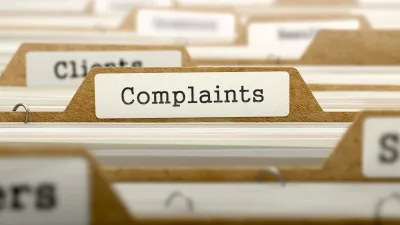What’s a woman worth?
Findings recently released by AXA Australia and Dexx&r into the level of under-insurance in Australia reveal that Australian women are chronically under-insured. They have only 32 per cent of the life cover they need and an appalling 14 per cent of the income protection they need.
But let’s face facts. Like it or not, there will always be a certain level of under-insurance in Australia because people, both men and women, will always choose to carry a certain amount of the risk themselves.
It is both unrealistic and unreasonable to accept zero tolerance of under-insurance. But it is neither reasonable nor realistic for Australian women to accept the extreme level of under-insurance — 68-86 per cent — they are currently carrying.
The question is, have women made truly informed choices about the level of risk they are carrying? My suspicion is they have not. One of the reasons is because the industry has failed to effectively communicate the real consequences of under-insurance and too easily accepted excuses like ‘I can’t afford it’.
For the average Australian woman, affordability should not be an issue. The average cost to cover the uninsured amount of life cover for women is only $8.20 per week; for income protection it is $17.23 per week.
As breadwinners, we all know that there are only so many ways to carve up the family dollar. But there are things that most families are quite prepared to spend money on — take-away dinners, entertainment, holidays and so on.
While those lifestyle choices are perfectly valid, advisers need to have the forbearance to conduct hard conversations that centre around the kind of lifestyle the family would have if Mum was no longer around or if she was no longer earning an income. Advisers need to start moving beyond the mathematics and encourage clients to explore real scenarios.
The industry seems to have been more successful in doing this with male clients than with female clients. This could be due in part to the fact that the adviser world is generally dominated by men. Men appear to find it easier and more natural to sell to other men.
One reason for this could be that the questions on the personal insurance statement are very personal. The types of conversations required to cover these questions appear to be harder for male advisers to have with female clients (and vice versa) than they are for female advisers to have with either sex.
If the underwriting process is to be conducted properly, it is not possible to make the personal questions any less personal, therefore the most obvious solution is to encourage male advisers to bring female advisers into their businesses.
One of the factors hindering the take-up of personal insurance by both men and women is the underwriting process itself. It can be long and drawn out, particularly if the client is busy and does not make visiting the doctor for blood and medical tests a priority. The drop-off rate is therefore very high. Advisers can help prevent this happening by preparing clients in advance for a lengthy process.
Suppose, however, that your female client knows she needs income protection insurance, is fully prepared to pay whatever it costs and understands that the underwriting process will take time. You know as well as I do that just because she wants it and needs it doesn’t mean she is going to get it.
One of the particular problems confronting women is that they are more likely than men to work part-time and/or from home and that often makes them ineligible for income protection cover.
Nobody in their right mind would suggest that women should change their work patterns in order to qualify for income protection cover and so the challenge confronting the industry is to design income protection to make it both available and affordable to more people.
That, however, is not likely to happen overnight. In the meantime, advisers need to think of alternatives for women that will cover similar types of risk.
Although it is not a perfect solution, a combination of trauma and total and permanent disability (TPD) cover could do the trick.
The level of under-insurance in Australia, particularly among women, is nothing short of alarming. While the insurance industry and advisers are committed to providing quality advice, they need to ensure clients are fully aware of the risks of being under-insured.
The level of under-insurance presents a significant opportunity for advisers — it would also be a significant contribution to the quality of advice being provided to women.
Tassin Barnard is general manager financial protection, AXA Australia.
Recommended for you
The Australian Financial Complaints Authority has reported an 18 per cent increase in investment and advice complaints received in the financial year 2025, rebounding from the previous year’s 26 per cent dip.
EY has broken down which uses of artificial intelligence are presenting the most benefits for wealth managers as well as whether it will impact employee headcounts.
Advice licensee Sequoia Financial Group has promoted Sophie Chen as an executive director, following her work on the firm’s Asia Pacific strategy.
The former licensee of Anthony Del Vecchio, a Melbourne adviser sentenced for a $4.5 million theft, has seen its AFSL cancelled by ASIC after a payment by the Compensation Scheme of Last Resort.











